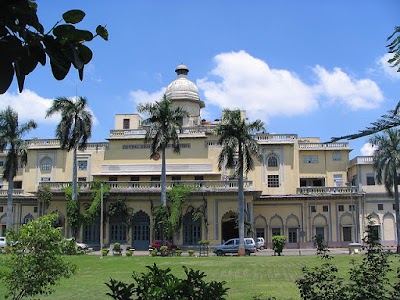
Chattar Manzil
Lucknow, India
- Admire the umbrella-shaped domes
- Capture photos
- Explore the palace complex
- Learn about Nawabs of Awadh
- Stroll through the gardens
- Visit the museum
Known for:
Description:
Chattar Manzil, also known as the Umbrella Palace, is a unique and historically significant building located in Lucknow, India. Its distinctive umbrella-shaped domes give the palace its name. It stands as a testament to the grandeur of the Nawabs of Awadh and their architectural vision. The palace complex is a blend of Indo-European architectural styles, featuring ornate stucco work, intricate carvings, and sprawling gardens. Visitors can explore the central hall, the Bari Chattar Manzil, and the Chhoti Chattar Manzil, each showcasing different aspects of the palace's history and design. The surrounding gardens offer a peaceful retreat from the bustling city. The palace has witnessed significant historical events and served various purposes over the years, adding to its allure.
History:
Chattar Manzil was built in the mid-19th century by Nawab Ghazi-ud-Din Haidar and completed during the reign of Nawab Nasir-ud-Din Haidar. It served as a palace complex, housing the royal family and hosting grand events. The palace's design reflects the evolving architectural tastes of the time, incorporating elements of European Baroque and Neoclassical styles with traditional Indian elements. During the Indian Rebellion of 1857, the palace played a crucial role and witnessed intense fighting. After the rebellion, it was used as a club and later housed the Central Picture Gallery and the State Archaeological Museum. Today, Chattar Manzil stands as a preserved historical monument, offering a glimpse into the opulent lifestyle of the Nawabs of Awadh.